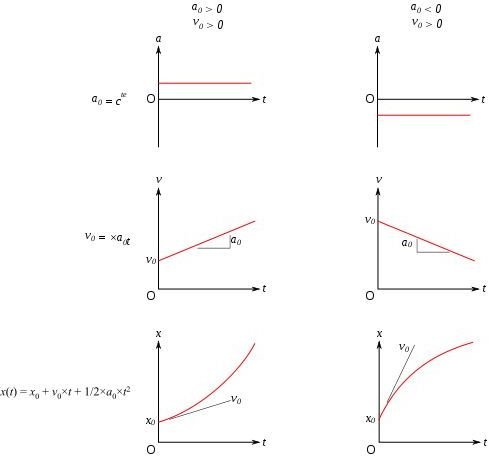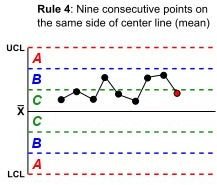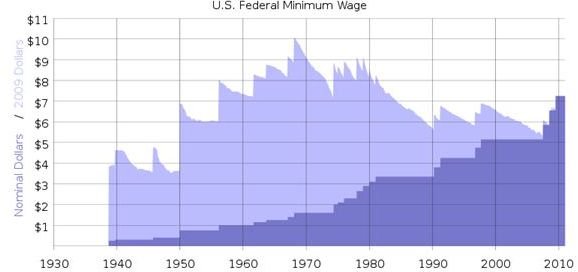Principles of Scientific Management -The Tenets of the Past Shaping Today's Business Trends
Frederick W. Taylor’s School of Thought
The principles of scientific management were inferences gathered by Frederick Winslow Taylor from his scientific studies and experimentations of the early industrial processes. Taylor was a mechanical engineer who staunchly supported the 1900’s “Efficiency Movement” and sought ways to improve business productivity through workforce efficiency and elimination of waste.
His proposition was to simplify the work processes by establishing a set of procedural guidelines and setting up standards based on scientific observations and analysis. That way, worker’s compensation could be determined by the amount of productive work contributed. He envisioned that optimized productivity would result in “maximum prosperity,” as the profits reaped will be distributed as dividends among capitalists and as high wages for the workers.
There are four founding principles in support of Taylor’s proposed scientific management scheme:
1. Work processes should be standardized by implementing a set of scientifically formulated procedures and measurements. The standards are determined by conducting time and motion studies.
2. Replace self-taught artisan skills with scientifically formulated training methods instead of adhering to the traditional “rule-of-thumb.” The objective is to enable even the unskilled workers to produce uniform results that meet the standards for a particular job, skill, or line of work.
3. Motivate the workers to adopt the concept of scientific methods and measurements, by rewarding their efficiency and productivity with the equivalent pay rate standards. This principle aims to dispel the worker’s assertion that producing more creates the impression that the task does not require much skill; hence, employers will decide to lower their pay rate.
4. Promote work coordination between managers and workers, in which managers will work out the scientifically formulated plans for a particular production order, while the workers will execute the processes laid out in the manager’s production plans.
The Changes and Their Impact

The said principles had been formulated based on conditions that are similar to those existing in today’s current state of economic affairs. However, a century has passed, but we are nowhere at the height of prosperity envisioned by F.W.Taylor since the levels of poverty and unemployment are still high.
It is not that Taylor was incorrect with his scientific observations and conclusions but that workforce productivity is only a part of the improvements necessary for a business to run efficiently.
Actually, the “Efficiency Movement” was only a part of a much larger movement known as the “Era of Progressivism.” It was a time when professionals, mostly scientific practitioners, banded together to push for political, economic and social reforms based on their deductive and inductive inferences.
During the early years of its introduction, a large number of companies pioneered the adoption of scientific management. Bear in mind, however, that this was still a time in America’s history when labor problems were still prevalent due to political corruptions and corporate excesses. Hence, there were still obstructions and oppositionists to the full implementation of F.W. Taylor’s scientific school of thought for achieving workforce productivity.
Nevertheless, some companies began performing time and motion studies by breaking down tasks into smaller portions. Each task was observed and placed under several experiments to determine the time it would take to produce a particular work segment with the best results.
The outputs were measured as to quality and quantity in order to establish a standard that is commensurate to the best time possible. The experiments were then repeated until a specific measure of quality, quantity of output and the length of time could be established as standards.
Moreover, the experiments were conducted using different conditions or elements to enhance the worker’s capabilities. Compensation schemes were subsequently based on piece rates as a means to motivate the worker into producing more, although with the condition that their outputs should meet the standards.

The Hawthorne Studies
The most publicized of these scientific experiments was conducted in 1920 by the Western Electric company for their Hawthorne plant. The changes made pertained to the lighting provisions in the workplace to determine the optimum level of lighting that would produce the best results. The changes were noted to have brought about not only productivity but also efficiency due to the workers’ high-morale because of the special attention that was extended to them.
A different set of observations was gathered from the studies conducted in the electric company’s bank wiring room, which handled the assemblage of telephone switching equipment. The study was performed by a group of anthropologists from Harvard and their observations revealed the following:
-
Although paid by piece rate, the workers still did not increase their output not because they were not motivated but because they were prevented by an unspoken agreement among the workers. They were wary that in increasing the number of outputs, their employers would use the increased cost of overhead as an excuse to lower their base rate.
-
If a worker tried to produce more than the norm, he or she would be subjected to ridicule or sarcasm or would be placed in a position where he or she would not be able to accomplish anything at all.
-
The workers protected their group from external interference and were observed tampering with the reports to make it appear that their outputs met the standards.
-
There was an established status or rank among the workers, where the lowest rank performed the least important task.
-
The inspectors ranked the highest, but they were excluded from their circle.
-
The study arrived at a conclusion that the workers resisted changes inasmuch as management was still in control of piece rates and the number of hours. Thus, the workers cooked-up their own strategies to preclude any managerial strategies of demanding goals that would not benefit them economically.

The Victory of the Minimum Wage Law Movement
It was during the 1920 to 1921 that the effects of the social and economic problems began to surmount. They had developed in time into a form of economic recession, since there was still no significant improvement in the American economy. Labor unrest, mismanaged businesses, and corruption among public officials eventually culminated in the stock market crash of 1929, which led to what is known in history as The Great Depression.
In 1937, the Supreme Court finally ruled in favor of the Minimum Wage Law, for which President Franklin D. Roosevelt had been battling for years. This was not a victory won single-handedly by the president but one supported by a group of patriotic businesspersons and consumers. They became united in boycotting the products manufactured by the oppositionists to the minimum wage law.
The implementation of the law in 1938 finally signaled the abatement of labor problems. Labor conditions greatly improved during the rebuilding efforts of the post-World War II era and brought about a period of prosperity in the latter half of the century.
Business in the 21st Century

The recession at the beginning of the 21st century was actually a carry-over of the remaining ills of the 20th century, which pertained to corporate excesses and political corruption. Similar to the beginnings of the 1900s, business reforms are again being instituted in order to recover and move forward.
This time, however, the tasks are much easier since advancements in technology are available to help owners and managers in implementing the necessary process improvements. Moreover, there are now laws for standard pay rates and the institution of corporate social responsibility.
The principles of scientific management are said to be shaping the future of modern day entrepreneurship to which business intelligence applications can efficiently analyze and divide into segments each process within an organization.
The outcomes are easily identified, measured, and analyzed by automated processes known as key performance indicators (KPI). Thus, workers’ productivity and efficiency in materials usage are monitored and measured based on data gathered from actual operational activities performed by each individual.
Automated solutions, processes and accessible data have made scientific management in the 21st century easier to comprehend and manage. However, if lessons are to be learned, the principles are only guidelines for achieving productivity and waste elimination. The maximum prosperity, which Frederick Winslow Taylor envisioned, is still dependent on the social and economic benefits that will be mutually gained by both the owners and their workers.
Reference Materials and Image Credit Section
References:
- Modern History Sourcebook: Frederick W. Taylor: The Principles of Scientific Management, 1911 – https://www.fordham.edu/halsall/mod/1911taylor.html
- Analytictech.com – Hawthorne Studies – https://www.analytictech.com/mb021/handouts/bank_wiring.htm
- BookRags –Efficiency Movement :https://www.bookrags.com/wiki/Efficiency_Movement
- Progress.Com: Making Intelligence Actionable — https://webcache.googleusercontent.com/search?q=cache:nAr-iv8MH_wJ:web.progress.com/docs/whitepapers/gated/savvion/making_intelligence_actionable_bpm-wp.pdf+BI+solutions+for+simplified+job+processes&hl=en&gl=ph
Image Credits:
- Frederick Winslow Taylor lived from 1856 to 1915 By Grap under Public Domain
- Generic curves of acceleration, speed and position vs. time for a linear motion…By Cdang under Public Domain
- Control Chart showing the principles of rule 4 of the ‘Western Union Rules By GMcGlinnRichard Argentieri / CC Attribution-Share Alike 3.0
- History of US federal minimum wage increases By Self / under Public Domain
- Screenshot CLX.OCS Billing By Pablocycling /GNU Free Documentation License, Version 1.2
